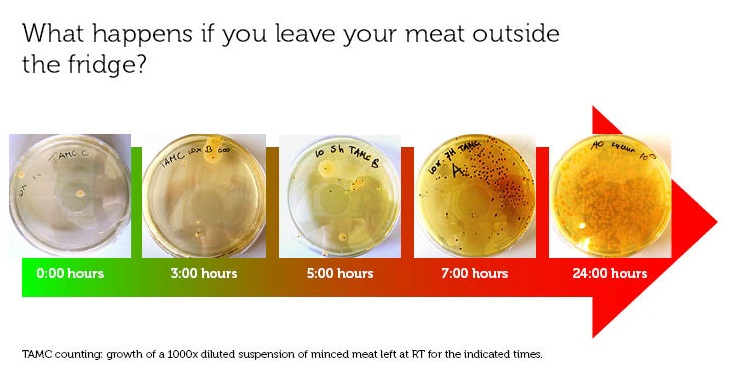Team:Groningen/Safety
From 2012.igem.org








Contents |
Safety in the lab
Students working with microbiology at the university of Groningen are from the beginning of their study career informed on safety aspects of microbiology. They are required to get a VMT certificate that demonstrates that they are able to safely work with microbiology. The bases for this certificate are the 10 commandments for VMT (safe microbiological techniques) and every iGEM member from our team is required to know these rules and uphold them when working in the lab.
10 COMMANDMENTS for Safe Microbiological Techniques
- 1. All VMT related work can only be performed by those people that have permission from the Biological Safety Officer (BVF). Work according to the rules, even if you believe there is no apparent risk.
- 2. During VMT related work all doors and windows have to be closed. Verify that insects and other pests are not present in the lab.
- 3. Wear a closed laboratory coat. Do not take this labcoat outside the VMT area unless it is absolutely necessary for the experiment. In case of a contamination of the labcoat, sterilize the labcoat first, with bleach or by autoclaving, before washing.
- 4. Clean and sterilize spills immediately. Report serious contamination immediately to the BVF.
- 5. It is absolutely prohibited to eat, drink or smoke, or to have cups, plates, mugs or silverware in the VMT area.
- 6. Pipetting by mouth is prohibited. Used pipettes are collected in a disinfecting solution.
- 7. Prevent aerosols. These may be created by -splashing drops; -pouring of liquids; - discharging pipettes; -opening of moist plugs; - using inoculating loops that are too hot. Use needles only if there is absolutely no alternative.
- 8. Glassware and instruments that have been in contact with GMO's (Genetically Modified Organisms, GGO’s in Dutch) have to be sterilized or disinfected before being washed, reused or discarded. Biological waste has to be collected in autoclavable plastic bags, which are autoclaved before discarding (use indicator tape to demonstrate that the bag was autoclaved).
- 9. Wash hands with soap and water after work and before leaving the room. Bench surface areas have to be cleaned and disinfected daily. Keep area clean and organized.
- 10. Record the general nature of the work clearly in a lab journal.
Micro-organisms involved
- We worked with bad meat, a versatile environment for the growth of Pseudomonas, Salmonella, E. coli and other harmful bacteria. In order to work as safely as possible, we performed our rotten meat experiments in closed bottles and used our flow cabinets and procedure masks when taking meat samples. All of the meat was assumed to be biological waste, so we put everything in the autoclave to ensure that our researchers worked as safe as possible. You can read more about food safety in the dedicated chapter below.
- Bacillus subtilis - Food grade bacterium. Considered as safe as Lactococcus lactis in yoghurt.
- Escherichia coli - Standard laboratorium bacterium, widely used as chassis for synthetic biology. This bacterium is considered moderately safe, however, may cause infections and therefore has to be treated carefully.
More to consider
- Ethidium bromide is a carcinogenic compound that we used when we worked with agarose gels. To ensure our safety, we created a specific ethidium bromide region in our lab; in this area was clearly indicated that our researchers should use gloves and keep all the contaminated equipment in the EthBr area.
Genetical engineering and safety
Our project
During our project discussions and our presentations to the public, it became clear that the association of meat and bacteria being close to each other, is not easily accepted. That’s why decided to take extra care when we designed our indication sticker. To be absolutely sure there is no possibility that our Bacillus or its spores are able to come in the environment or on the preserved meat, we asked specialized companies to share their knowledge with us. A good idea for preventing exchange of GMO’s to the environment, is the use of nano pores.
But not only the sticker design ensures the safety of the public, also the nutrient composition in the sticker ensures Bacillus will only germinate and grow when the sticker is still intact. And even when our Bacillus is exposed to a environment that is favorable for growth, the production of the pigment will ensure that the bacterium kills itself, because the pigment is toxic for Bacillus.
Environmental safety
The BioBricks
The biosafety group
Every research facility has staff responsible for the safety of the labs where people work with GMO. We invited Dr. Juke Lolkema to give a lecture about GMOs and safety in the lab. As associate professor, Dr. Lolkema is responsible for the maintenance of safe microbial techniques in the whole Linneausborg.
Food safety
For our project, we did some research on food safety and the European regulations on this subject, especially around our subject, minced meat (results of research will follow). We took some of this regulations into practice by measuring the Total Aerobic Microbial Count of meat left at room temperature for different times. You can see the results here.
Safety issues and the future of the iGEM competition
Find an alternative system for the antibiotic resistance markers used nowadays (in the BioBricks). This could be a pigment instead of cloning bacteria with antibiotic resistance. By horizontal gene transfer these resistance genes can be passed to other bacterial species.
Use this page to answer the questions on the safety page.
 "
"

























